This article has been reviewed according to Science X's editorial process and policies. Editors have highlighted the following attributes while ensuring the content's credibility:
fact-checked
proofread
A symmetric-actuating linear piezoceramic ultrasonic motor capable of producing a scissoring effect
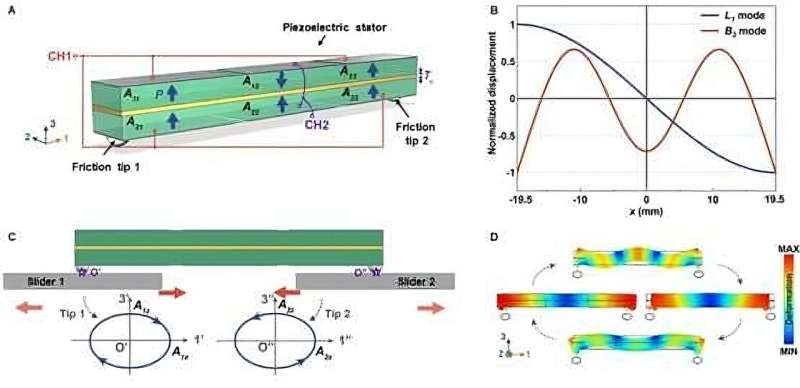
As an electromechanical actuator, symmetric-actuating devices are often used in the fields where symmetrical motion, drive, and control are required, such as grasping or scissoring operations, and fast symmetric opening or closing of microchannels.
One scenario with strong demand is minimally invasive surgery, including precision grasping and cutting tumor cells, retinal microsurgery, etc. In the field of micro electromechanical devices, the scissoring or grasping operation essentially belongs to two symmetrical actuations between two end-effectors. However, there is almost no one motor that can directly generate two symmetrical linear motions.
In general, to produce two symmetrical movements, a relatively simple method is to use two series-connected or parallel-connected stators to respectively drive two runners moving towards or away from each other simultaneously. The second way is to convert the rotational motion of an output shaft into two linear symmetric motions with the assist of a pair of reverse threads or a pair of reverse gears.
The third solution is to employ sophisticated transmission mechanisms such as racks and pinions, flexible hinges, etc., to convert one-direction movement of one actuator into two opposite movements. However, all the above methods result in more complicated and larger structures, and may be at the cost of very limited strokes and output forces.
-
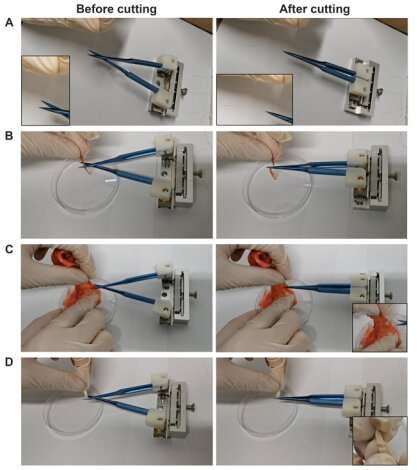
Photos of the pair of microsurgical scissors cutting copper wires (A), pork (B), beef slices (C), and intestines (D). Credit: Research -
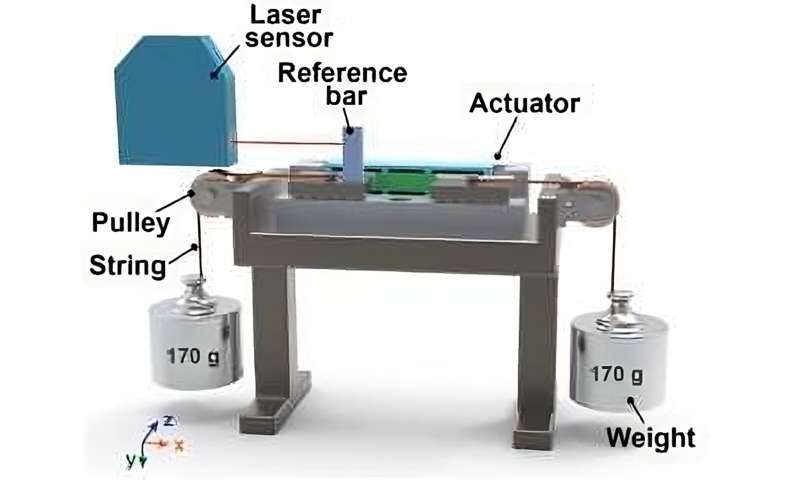
The revolutionary function of SLPUM: one piezoceramic stator can be used as two motors to generate two symmetrical linear motion outputs. Credit: Research
Therefore, it is necessary to develop a new driving mechanism to achieve symmetrical high-precision motions with a large movement range of two runners driven by only one miniaturized and integrated piezoelectric stator or actuator.
Professor Dong Shuxiang's research group has developed a novel symmetric-actuating linear piezoceramic ultrasonic motor (SLPUM) which could directly generate two-way symmetrical motion outputs of one pair of scissors without using additional complex transmission mechanisms.
The basic idea is that one piezoelectric ceramic bar containing (2 × 3) arrayed units can operate in the coupled resonant mode of the first longitudinal (L1) and third bending (B3) modes to produce two symmetrical elliptical movement trajectories in opposite directions at its two friction tips.
Through the friction coupling, the two symmetrical elliptical movements of friction tips can be converted into symmetrical, synchronous opposite or backward movements of two movers with the same velocity. This working mechanism has made a revolutionary change to the traditional working principle that one stator can only drive one actuator. At the same time, this symmetric-actuating mechanism doubles the working efficiency of the piezoelectric motor.
-
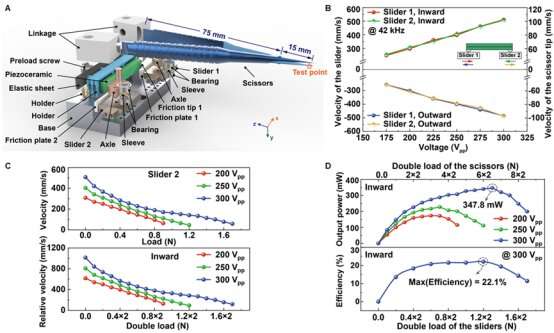
The exploded view of the proposed SLPUM prototype with the commercial microsurgical scissors and its output characteristics. Credit: Research -
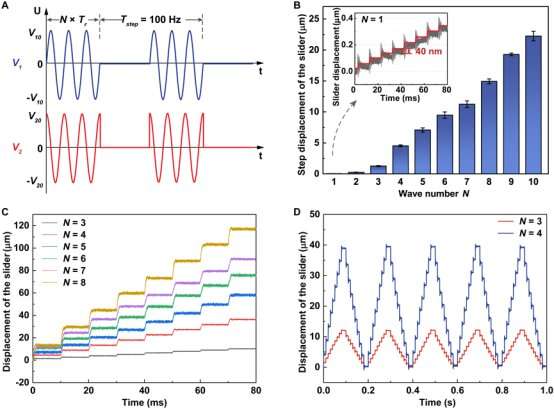
Stepping characteristics of one slider of the SLPUM. Credit: Research
Furthermore, as a pair of commercial microsurgical scissors was mounted on the sliders, the L1-B3 SLPUM could be further applied to microsurgical robots for performing high-precision microsurgical operations. Moreover, the scissoring effect can increase the output force of the two driving ends by several times.
The prototype shows the following features: (i) fast relative moving velocity (~ 1.0 m/s) of two sliders in outward or inward direction, (ii) high step resolution (40 nm for the slider), (iii) relatively large output force (3.4 N for the sliders and 17 N for the scissors), (iv) high output power (347.8 mW) and power density (405.4 mW/cm3 or 9.65 mW/cm3·kHz) which is double what has been reported, and (v) high efficiency (22.1%) under the electric field of 150 Vpp/mm. Therefore, this work is instructive for future piezoelectric actuating device designs.
For verification, the researchers used this prototype to conduct experiments in different application scenarios, such as cutting copper wires, pork, beef slices, intestines, etc. Thus, this motor can be further applied in microsurgical robots to perform high-precision grasping, scissoring, and other surgical operations. And the design strategy proposed in this work paves a new way for developing future piezoelectric micro electromechanical devices.
The study is published in the journal Research.
More information: Zhanmiao Li et al, A Symmetric-Actuating Linear Piezoceramic Ultrasonic Motor Capable of Producing a Scissoring Effect, Research (2023). DOI: 10.34133/research.0156




















